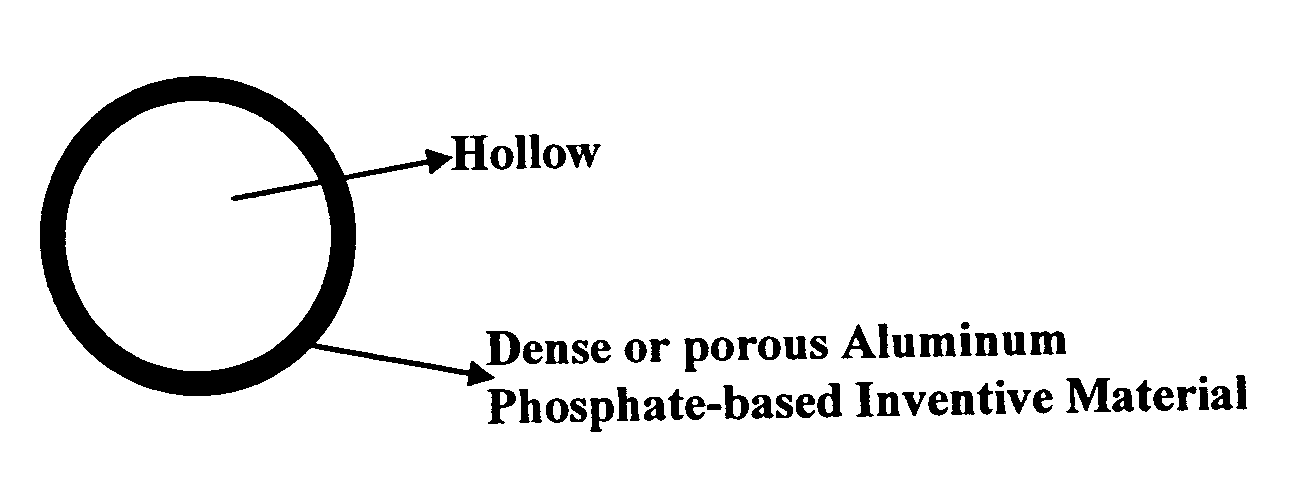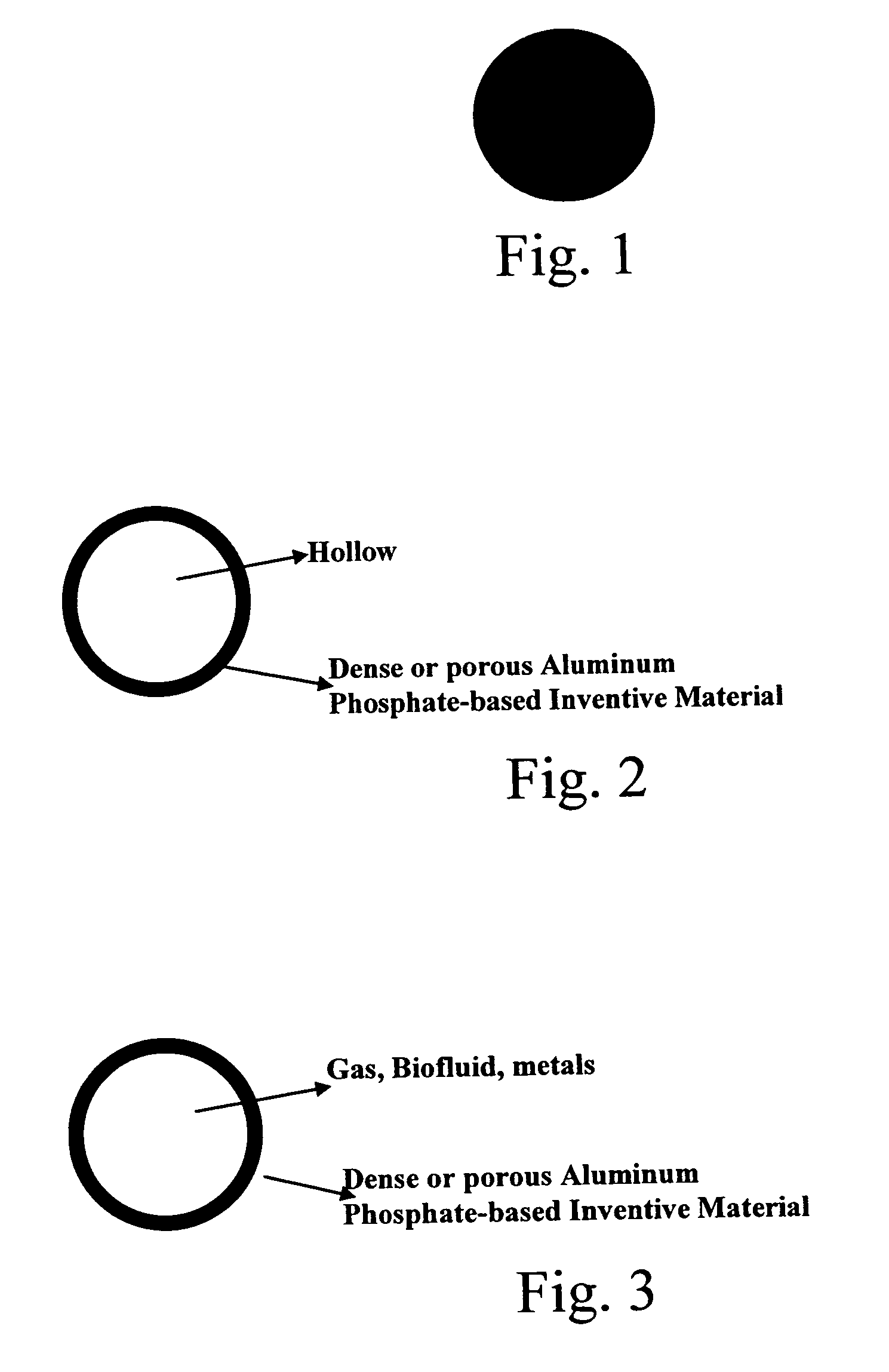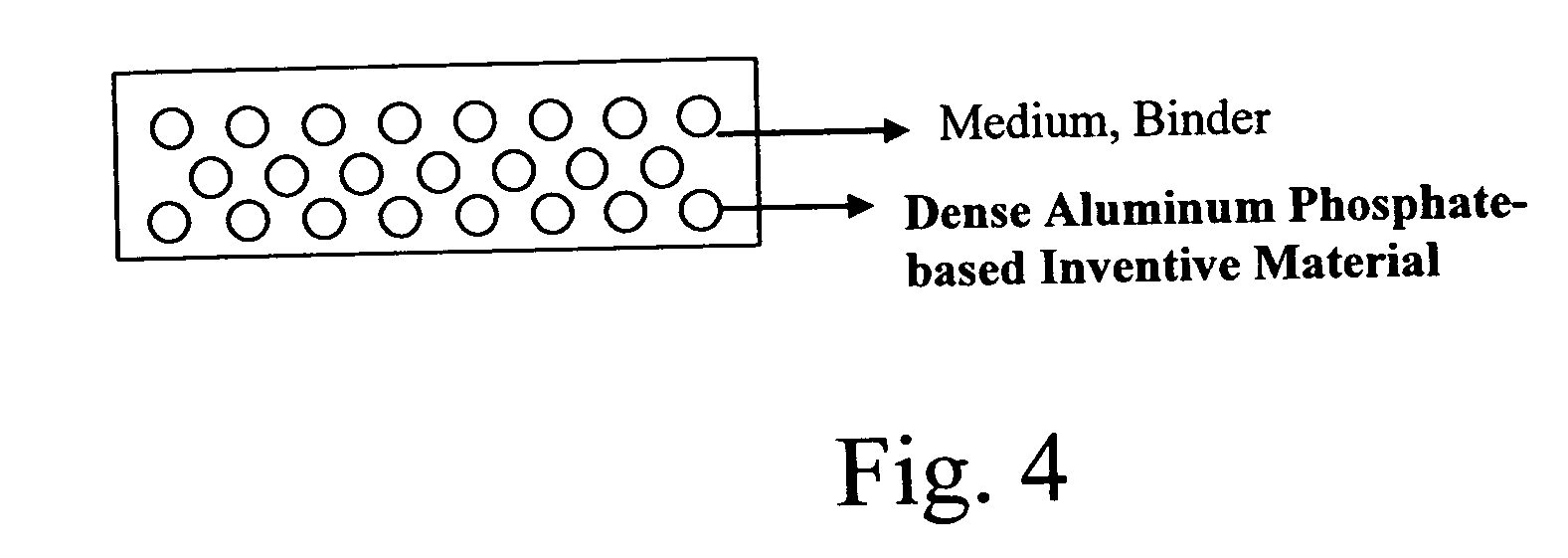Aluminum phosphate based microspheres
a technology of aluminum phosphate and microspheres, applied in the field of aluminum phosphate based microspheres, can solve the problems of prior art microspheres, ions are also detrimental to the electrical properties of glass, lack of morphological and thermal stability at elevated temperatures, etc., to achieve the effect of improving thermal, chemical and oxidation resistance, improving density, and increasing the content of additives
- Summary
- Abstract
- Description
- Claims
- Application Information
AI Technical Summary
Benefits of technology
Problems solved by technology
Method used
Image
Examples
example 1
[0154]408.90 g Al(NO3)3 9H2O was dissolved in 382 ml ethanol to make 500 ml of solution. In a separate container in ambient atmosphere, 25.23 g P2O5 was dissolved in 300 ml ethanol. After the P2O5 is dissolved, the two solutions were mixed together and allowed to stir for several minutes.
example 2
[0155]Niro portable spray dryer with rotary wheel based atomizer is used to spray dry precursor solution prepared in example 1. The concentration of the inventive material liquid precursor solution will be represented here by the water content of the mainly alcoholic base composition. This variable has been found to be the second most effective in controlling the shape of powder particles. A wide range of water content values have been used for producing spherical powders via spray drying. There is a strong relation with the specific gravity of spray dry solutions with the shape of the resulting powder (Iskandar, F., Gradon L., and Okuyama K. “Control of the Morphology of Nanostructured Particles Prepared by the Spray Drying of a Nanoparticle Sol”. J. Colloid and Interface Science. 265 (2003) 296-303). Too much or too little water content will produce non-spherical powders with telltale shapes such as ovoids, toroids, platelets, or conglomerates, to name a few.
example 3
[0156]With reference to FIG. 6, a scanning electron microscopic image of the as prepared inventive material microspheres. Micrographs shows the narrow particle size distribution and uniformity of the inventive material microspheres.
PUM
| Property | Measurement | Unit |
|---|---|---|
| Length | aaaaa | aaaaa |
| Length | aaaaa | aaaaa |
| Thickness | aaaaa | aaaaa |
Abstract
Description
Claims
Application Information
 Login to View More
Login to View More - R&D
- Intellectual Property
- Life Sciences
- Materials
- Tech Scout
- Unparalleled Data Quality
- Higher Quality Content
- 60% Fewer Hallucinations
Browse by: Latest US Patents, China's latest patents, Technical Efficacy Thesaurus, Application Domain, Technology Topic, Popular Technical Reports.
© 2025 PatSnap. All rights reserved.Legal|Privacy policy|Modern Slavery Act Transparency Statement|Sitemap|About US| Contact US: help@patsnap.com



